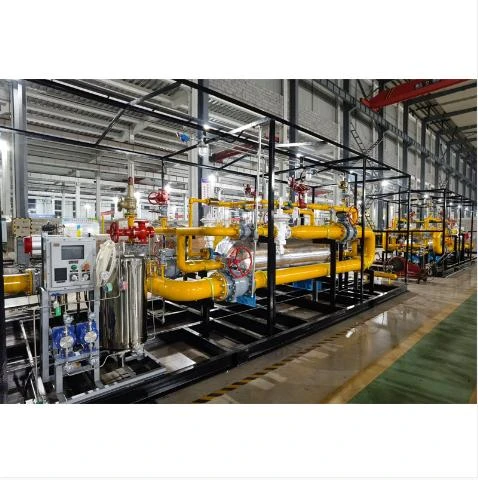
Dec . 05, 2024 15:38
Back to list
Understanding the Importance and Function of Safety Relief Valves in Industrial Systems
Safety Relief Valves A Critical Component in Pressure Management Systems
Safety relief valves (SRVs) are essential devices used in various industries to protect equipment and personnel from the dangers associated with excessive pressure. These valves serve as a safeguard, ensuring that pressure levels do not exceed safe operational limits. By understanding the functionality, types, applications, and maintenance of safety relief valves, we can appreciate their importance in industrial safety and efficiency.
Functionality of Safety Relief Valves
The primary function of a safety relief valve is to automatically release pressure from a pressurized system when it exceeds a predetermined level. This prevents catastrophic failures, such as explosions or equipment damage, that can occur due to overpressure conditions. Safety relief valves work by utilizing a spring-loaded mechanism. When the pressure inside the system reaches a specified set point, the force exerted by the gas or fluid overcomes the spring force, prompting the valve to open. This allows excess pressure to be vented safely to the atmosphere or redirected to a safe location, reducing the pressure to an acceptable level before closing again.
Types of Safety Relief Valves
There are two main types of safety relief valves safety valves and relief valves. Safety valves are commonly used for gases and vapors, while relief valves are typically employed for liquids. Safety valves operate quickly and are designed to close tightly once the pressure returns to a safe level. In contrast, relief valves can handle larger volumes of fluid and may remain partially open to maintain a consistent pressure level, making them suitable for processes that involve continuous pressure fluctuations.
Another category is the pilot-operated valve, which uses a secondary pressure signal to control the opening and closing of the main valve. These valves are often employed in high-pressure systems and provide greater control and accuracy in pressure management.
safety relief valve

Applications of Safety Relief Valves
Safety relief valves are vital in a wide range of applications across various sectors, including oil and gas, chemical processing, pharmaceuticals, water treatment, and power generation. In the oil and gas industry, SRVs play a crucial role in maintaining the integrity of pipelines and storage tanks by preventing overpressure scenarios that could lead to leaks or explosions. In chemical processing plants, these valves protect reactors and other equipment from pressure surges caused by exothermic reactions. Similarly, in the pharmaceutical sector, SRVs ensure that sensitive processes remain within safe operational limits, maintaining product quality and worker safety.
Maintenance of Safety Relief Valves
Regular maintenance and testing of safety relief valves are paramount to ensure their reliability and performance. Over time, these valves can become corroded, develop leaks, or fail to close properly due to accumulated debris or wear. Industry standards typically recommend inspecting and testing safety relief valves at least once a year or following any significant system changes. Maintenance procedures may include cleaning, replacing worn parts, and calibrating the valve to ensure accurate set pressures.
Documentation plays a crucial role in maintaining safety relief valves. Maintaining a log of inspections, repairs, and testing can help organizations manage assets effectively and ensure compliance with industry regulations.
Conclusion
Safety relief valves are indispensable components in pressure management systems across many industries. Their ability to automatically release excess pressure protects infrastructure, equipment, and personnel from the dangers associated with overpressure. By understanding the functionality, types, applications, and maintenance of SRVs, organizations can enhance their safety protocols and operational efficiency. In an era where safety regulations are becoming more stringent and operational risks are constantly evolving, investing in reliable safety relief valves and maintaining them diligently is a crucial step in safeguarding both life and property. As industries continue to expand and innovate, the role of safety relief valves will remain vital in ensuring that these advancements occur within safe and controlled environments.
Next:
Latest news
-
Safety Valve Spring-Loaded Design Overpressure ProtectionNewsJul.25,2025
-
Precision Voltage Regulator AC5 Accuracy Grade PerformanceNewsJul.25,2025
-
Natural Gas Pressure Regulating Skid Industrial Pipeline ApplicationsNewsJul.25,2025
-
Natural Gas Filter Stainless Steel Mesh Element DesignNewsJul.25,2025
-
Gas Pressure Regulator Valve Direct-Acting Spring-Loaded DesignNewsJul.25,2025
-
Decompression Equipment Multi-Stage Heat Exchange System DesignNewsJul.25,2025

